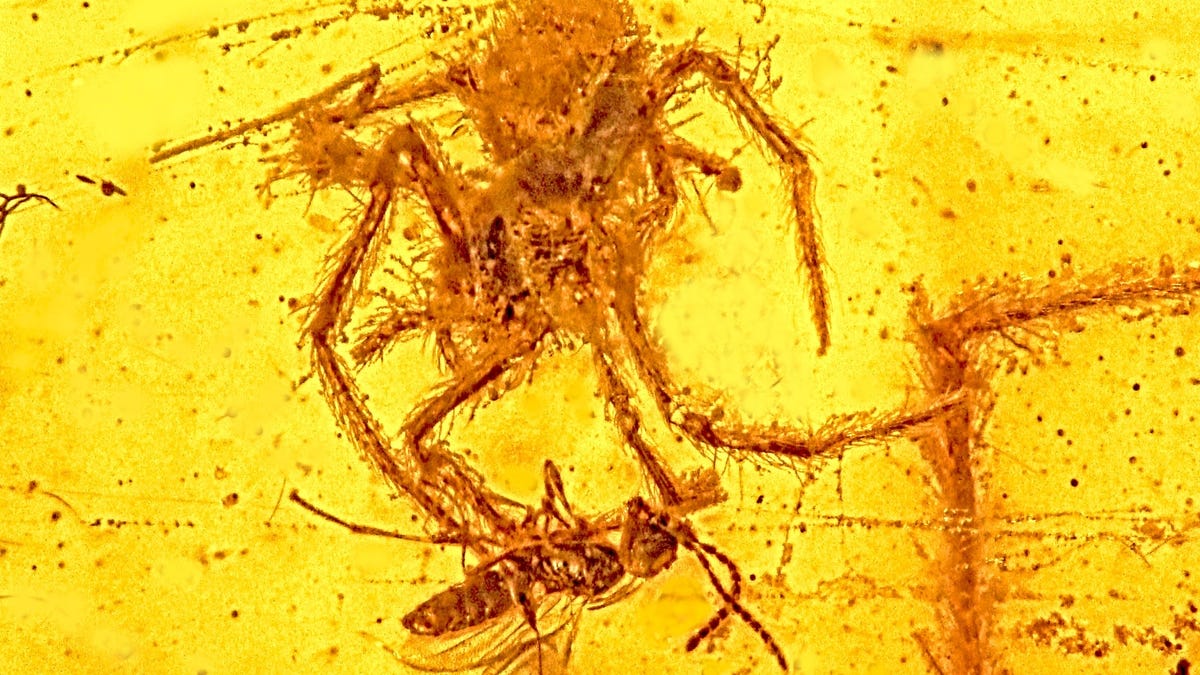100-million-year-old spider attack captured in amber
A once-in-a-lifetime find yields a 100-million-year-old piece of history featuring a fossilized spider attacking a wasp caught in its web.
Oregon State University researchers this week revealed details about a piece of amber from the Early Cretaceous period that contains a spider in its web attacking an intruding wasp.
The fossilized moment of doom -- the first of its kind discovered in amber -- derived from the Hukawng Valley in Myanmar, somewhere around 97 to 110 million years ago.
"The wasp was watching the spider just as it was about to be attacked, when tree resin flowed over and captured both of them," said George Poinar, Jr., a professor at OSU who wrote about the discovery in the journal Historical Biology.
What makes this find so sensationally rare, aside from the fact that the amber clearly shows a snapshot of the spider moving in on the wasp, is the fact that the piece contains 15 unbroken strands of ancient spider silk within (the wasp actually sits captured in several strands).
According to Poinar, the two genera in the amber are extinct, but the parasitic wasp's modern ancestor continues to deliver parasites into spider and insect eggs to this day.
Coincidentally, Poinar discovered a fossil of the oldest-known species of bee in the same valley back in 2006.


